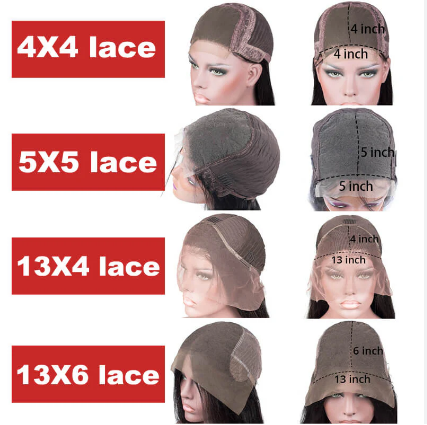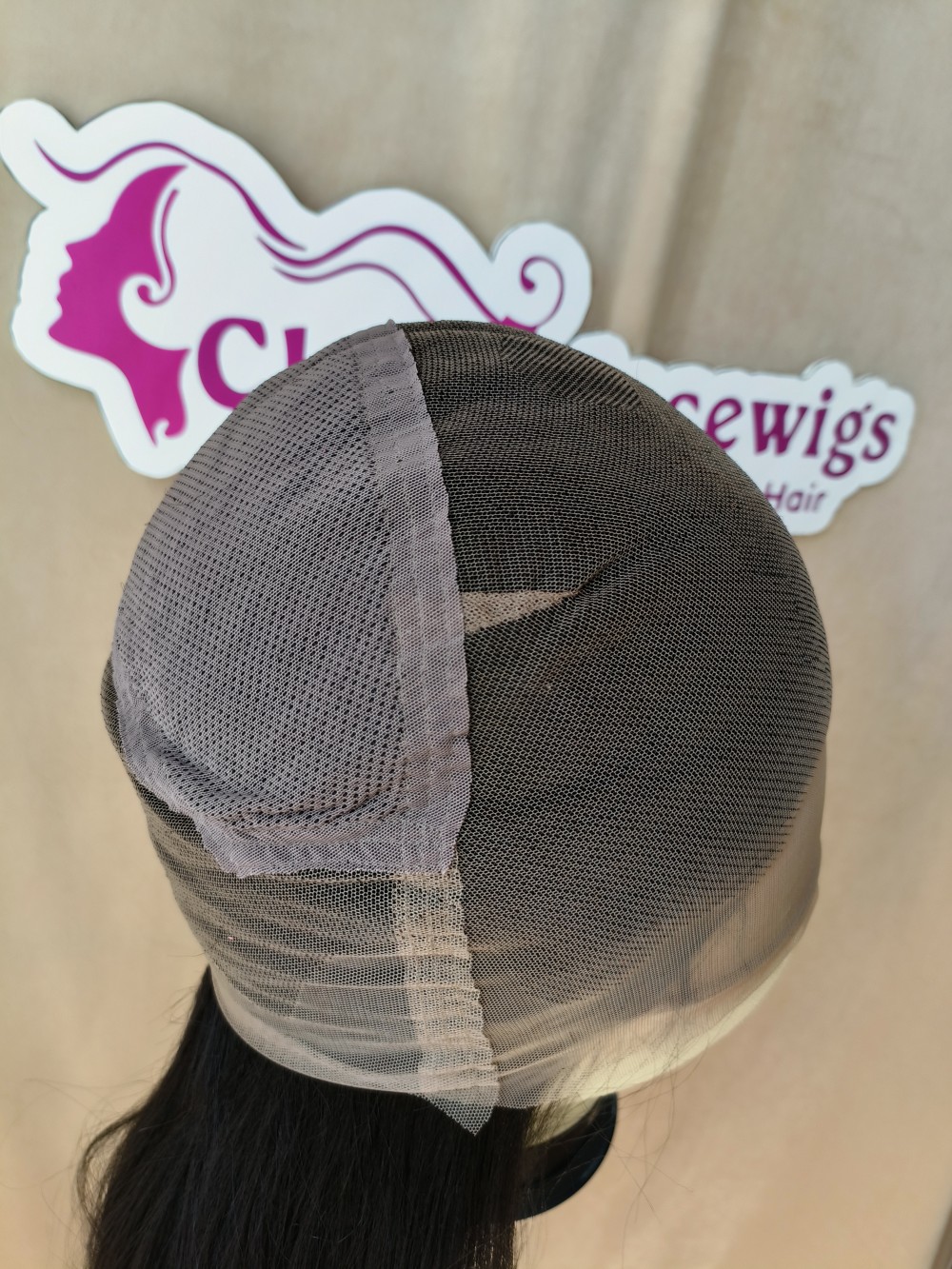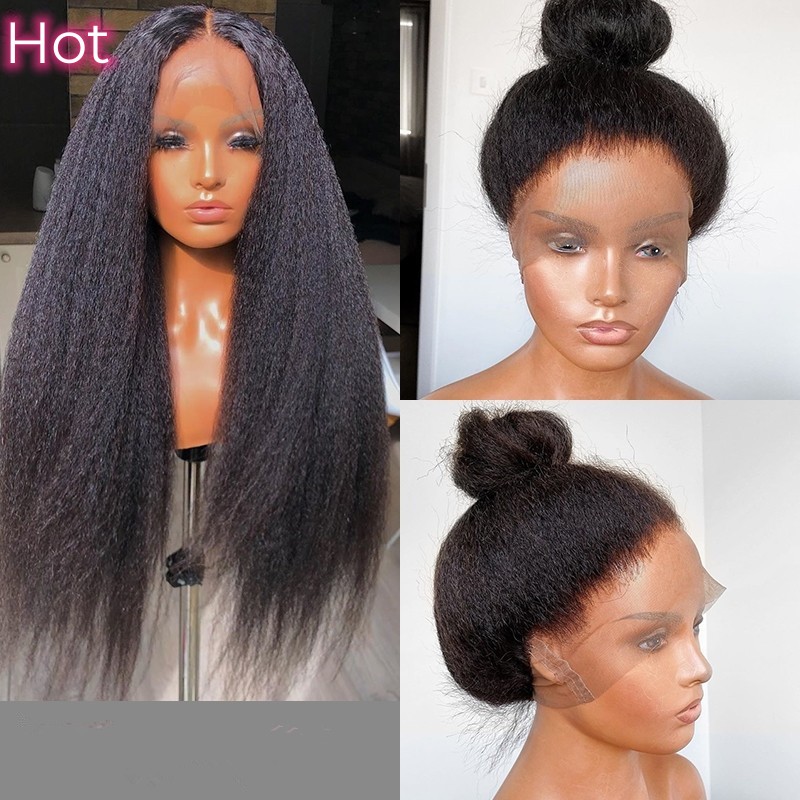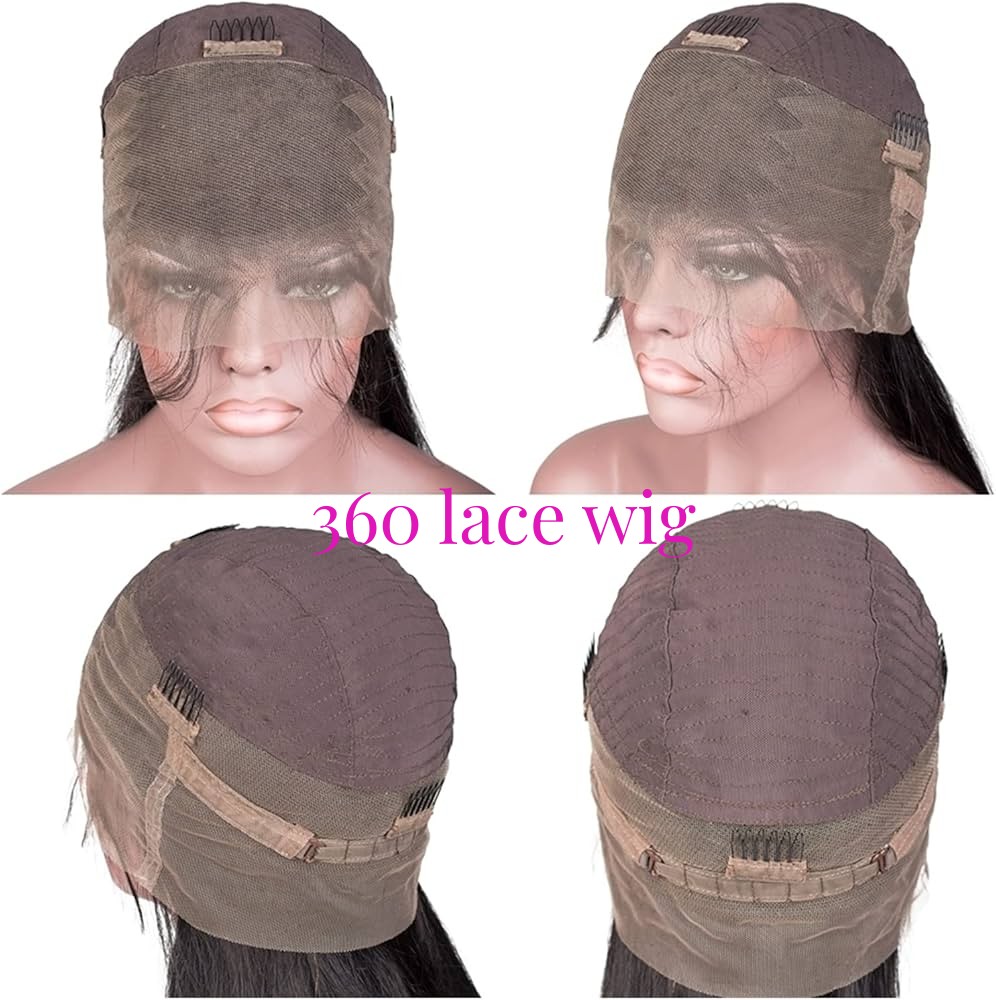If you’re venturing into the world of wigs, you might have noticed a lot of talk about different lace sizes. But what do these measurements mean, and how do they affect your wig-wearing experience?
What is lace size for wigs?
First things first: Let’s touch on what lace sizes refer to in the context of wigs. When we talk about lace sizes, we’re discussing the dimensions of the lace part laced into the wig cap.
Different lace sizes offer various degrees of versatility, comfort, and the ability to achieve natural-looking parts.
Typically, the size is denoted with two numbers, such as 4×4 or 13×6. The first number represents the width (from ear to ear), while the second number signifies the depth (from forehead to back). The choice of lace size can make a lot of difference. Smaller lace sizes like 4×4 and 5×5 are known for their ease of use, making them a popular choice among beginners. Larger sizes like 13×4 and 13×6 offer more styling options but may require adhesive for secure placement.

How to know what size lace front to get?
Consider Your Experience Level
If you’re a beginner, it’s best to start with a 4×4 or 5×5 lace wig. These sizes are easier to handle and don’t require adhesives, making them ideal for learning the ropes of wig application. As you become more comfortable, you can experiment with larger lace sizes like 13×4 and 13×6.
Think About Styling Needs
Your preferred hairstyles should also influence your choice. If you like simple, straightforward looks, a 4×4 or 5×5 lace wig will suffice. However, if you’re interested in more complex styles, like side parts or updos, the larger parting area of a 13×4 or 13×6 lace wig will offer the flexibility you need.
Account for Adhesive Use
Consider whether you’re comfortable using adhesive. Smaller lace wigs, such as 4×4 and 5×5, generally don’t require adhesives, offering a more straightforward application process. On the other hand, larger lace frontals, like the 13×4 and 13×6, often need adhesive for a seamless fit. If you’re willing to spend more time on application to achieve a natural appearance, then a larger lace might be worth the effort.
Test Different Sizes
It’s not uncommon for experienced wig wearers to have multiple wigs with different lace sizes. Testing various sizes can help you determine which one you’re most comfortable with and what suits your styling needs best. Sometimes, trying out different options is the best way to find your perfect match.
Are full lace wigs better?
One limitation of lace front wigs is the inability to style the hair into high ponytails or buns, as the back of the wig will reveal tracks.
Full lace wigs, these are entirely hand-tied and do not contain any tracks, allowing for free parting in any direction.

If you love experimenting with different hairstyles, a full lace wig might be the perfect choice. The all-around lace construction allows for complete freedom in styling, letting you switch up your look as often as you’d like. From half-up, half-down styles to intricate braids and elegant updos, full lace wigs provide the flexibility to achieve any look you desire.
Due to their intricate construction, full lace wigs typically have a higher price point.

Which is better 360 wig or full lace?
360 lace wigs bridge the gap between full lace wigs and lace frontal wigs. With lace running around the entire perimeter of the wig, these wigs allow for more extensive styling options than lace frontal wigs but may not offer the same versatility as full lace wigs.

360 lace wigs are generally more affordable than full lace wigs, making them an attractive option for those on a budget. Despite their lower price, they still offer a natural-looking hairline and good styling flexibility. If you’re looking for a balance between cost and versatility, a 360 lace wig might be the ideal choice for you.
Conclusion
Whether you choose a 360 wig for its versatility, a full lace wig for its incredibly natural look, or a lace front wig for its affordability and stylish front hairline, each type has its unique features and benefits.
Helpful link: 4 lace types for wigs